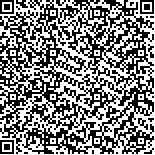本文已被:浏览 9536次 下载 25925次
中文摘要: 文章简述了激光成像雷达的原理和应用需求, 介绍了国外典型机载和星载激光成像雷达系统,分析了激光成像雷达的主要技术指标,结合不同体制激光成像雷达的分析,介绍了由上海技术物理研究所研发的各类激光成像雷达和部分应用结果。
中文关键词: 星载激光雷达,机载激光雷达,三维成像,激光测距
Abstract:Laser Imaging Detection and Ranging (LIDAR) is an active detection technology used for precise and fast 3-D spatial information acquisition for ground objects. Just like the Imaging Spectrometer technology and the Synthetic Aperture Radar (SAR) technology, LIDAR becomes one of the core acquisition technologies in ground earth observation. LIDAR not only can be used to map global high-precision Digital Elevation Model (DEM), along with high-resolution multispectral and hyper-spectral remote sensing images, but also can be used to generate 3-D images for a variety of purposes. Nowadays, air-borne LIDAR has already been being used for commercial purposes globally. On the other side, NASA has developed a series of space-borne laser imaging radar used not only for monitoring earth object such as atmosphere, glaciers, oceans, topography, and vegetation, but also for topographic survey of other planets. LIDAR Surface Topography (LIST), which will be completed in 2020, can achieve topographic survey with resolution of 5 m. Based on the principle of laser pulses distance measurement and the equation related to LIDAR, this paper discusses key technical specifications such as detection distance, accuracy, stability, false alarm rate, imaging view angle, resolution, and so on. This paper introduces 5 different kinds of laser imaging radars developed by the Shanghai Institute of Technical Physics as follows: (1)Chang E One lunar exploration satellite laser altimeter is a typical single-beam laser radar. It works on the 200 km circular lunar orbit and produces complete 3-D topographic map of lunar surface by obtaining distance data. (2)Multi-beam pushbroom LIDAR exploration is a system that can generate high-resolution 3-D terrain data and high-resolution 3-D visible light composite image. This is done by simultaneously emitting 24 laser beams, receiving echo signal using the 24-elements Silicon APD detector and combining with data obtained by visible CCD. (3)Airborne scanning laser ranging/imaging scanner is developed in the 1990s. This laser imaging radar system can obtain ground object’s position information and infrared gray-scale thermal image by combining Laser Lattice imaging technology and infrared scanning imaging technology. (4)Airborne high-frequency 3-D scanning laser radar can obtain high-resolution 3-D data and echo images. It uses laser with frequency up to 100 kHz, swing motor with large scan angle, swing lens with large diameter and coaxial laser transceiver system. (5)Photon counting laser radar detection system, along with its working mechanism and features are also introduced. Latest progress of photon counting laser radar made by the Shanghai Institute of Technical Physics is also included in this paper.
文章编号: 中图分类号: 文献标志码:
基金项目:
| 作者 | 单位 |
| 王建宇 | 中国科学院上海技术物理研究所 空间主动光电技术实验室上海 200083 |
| 舒嵘 | 中国科学院上海技术物理研究所 空间主动光电技术实验室上海 200083 |
| 黄庚华 | 中国科学院上海技术物理研究所 空间主动光电技术实验室上海 200083 |
| 薛永祺 | 中国科学院上海技术物理研究所 空间主动光电技术实验室上海 200083 |
引用文本:
王建宇,舒嵘,黄庚华,薛永祺.激光成像雷达技术和系统研制[J].中国科学院院刊,2013,(z1):67-76.
Wang Jianyu,Shu Rong,Huang Genghua,Xue Yongqi.Laser Imaging Detection and Ranging Technologies and Systems Development[J].Bulletin of Chinese Academy of Sciences,2013,(z1):67-76.
王建宇,舒嵘,黄庚华,薛永祺.激光成像雷达技术和系统研制[J].中国科学院院刊,2013,(z1):67-76.
Wang Jianyu,Shu Rong,Huang Genghua,Xue Yongqi.Laser Imaging Detection and Ranging Technologies and Systems Development[J].Bulletin of Chinese Academy of Sciences,2013,(z1):67-76.


